
Romanticism - II
Caspar David Friedrich
1774 - 1840
Caspar David Friedrich (5 September 1774 – 7 May 1840) was a German Romantic landscape painter, generally considered the most important German artist of his generation. He is best known for his allegorical landscapes, which typically feature contemplative figures silhouetted against night skies, morning mists, barren trees or Gothic ruins. His primary interest was the contemplation of nature, and his often symbolic and anti-classical work seeks to convey a subjective, emotional response to the natural world. Friedrich's paintings characteristically set a human presence in diminished perspective amid expansive landscapes, reducing the figures to a scale that, according to the art historian Christopher John Murray, directs "the viewer's gaze towards their metaphysical dimension".
Friedrich was born in the town of Greifswald on the Baltic Sea in what was at the time Swedish Pomerania. He studied in Copenhagen until 1798, before settling in Dresden. He came of age during a period when, across Europe, a growing disillusionment with materialistic society was giving rise to a new appreciation of spirituality. This shift in ideals was often expressed through a reevaluation of the natural world, as artists such as Friedrich, J. M. W. Turner and John Constable sought to depict nature as a "divine creation, to be set against the artifice of human civilization".
Friedrich's work brought him renown early in his career. Contemporaries such as the French sculptor David d'Angers spoke of him as having discovered "the tragedy of landscape". His work nevertheless fell from favour during his later years, and he died in obscurity. As Germany moved towards modernisation in the late 19th century, a new sense of urgency characterised its art, and Friedrich's contemplative depictions of stillness came to be seen as products of a bygone age.
The early 20th century brought a renewed appreciation of his art, beginning in 1906 with an exhibition of thirty-two of his paintings in Berlin. His work influenced Expressionist artists and later Surrealists and Existentialists. The rise of Nazism in the early 1930s saw a resurgence in Friedrich's popularity, but this was followed by a sharp decline as his paintings were, by association with the Nazi movement, seen as promoting German nationalism. In the late 1970s Friedrich regained his reputation as an icon of the German Romantic movement and a painter of international importance.

Gerhard von Kügelgen portrait of Friedrich

Wanderer above the Sea of Fog
1818

Cross in the Mountains (Tetschen Altar)
1808

The Abbey in the Oakwood
1808–1810

Rocky Landscape in the Elbe Sandstone Mountains
1822–1823

The Sea of Ice
1823–1824

Man and Woman Contemplating the Moon
c. 1824

Chalk Cliffs on Rügen
1818
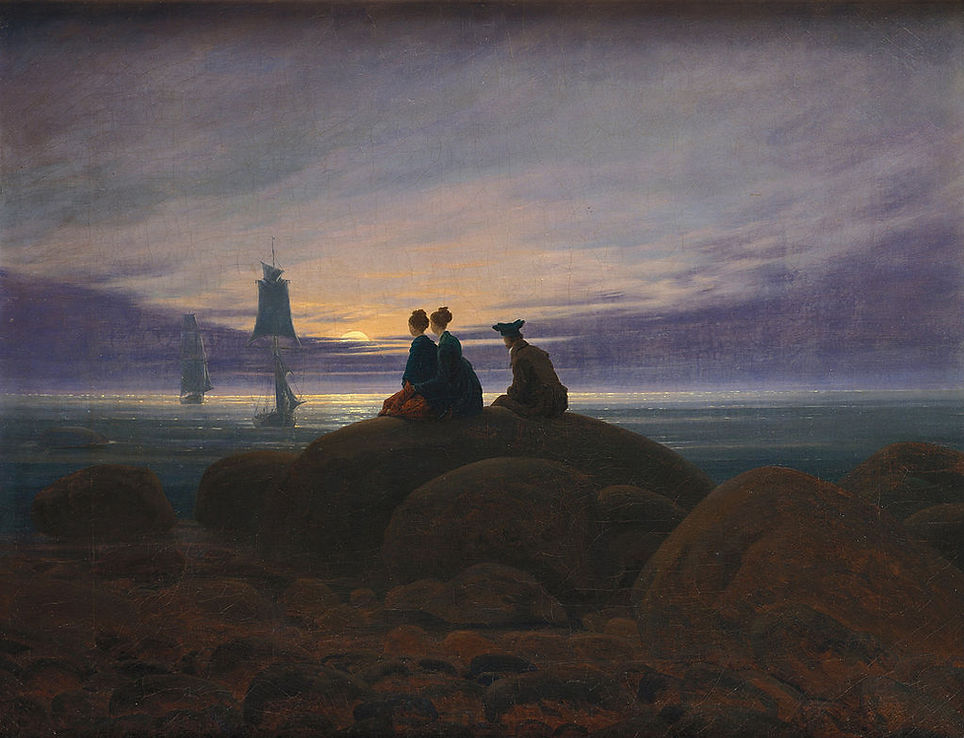
Moonrise over the Sea
1822

Old Heroes' Graves
1812

Entrée de cimetière
1825

The Cross Beside The Baltic
1815

Graveyard under Snow
1826

The Oak Tree in the Snow
1829

The Stages of Life
1835

Seashore by Moonlight
1835–1836

Wreck in the Sea of Ice
1798

Woman at a Window
1822

Woman Before the Rising Sun
1818 - 1820

Evening Landscape with Two Men
c.1830 - c.1835
Joseph Mallord William Turner
1775 - 1851
Joseph Mallord William Turner (23 April 1775 – 19 December 1851), known in his time as William Turner, was an English Romantic painter, printmaker and watercolourist. He is known for his expressive colouring, imaginative landscapes and turbulent, often violent marine paintings. He left behind more than 550 oil paintings, 2,000 watercolours, and 30,000 works on paper. He was championed by the leading English art critic John Ruskin from 1840, and is today regarded as having elevated landscape painting to an eminence rivalling history painting.
Turner was born in Maiden Lane, Covent Garden, London, to a modest lower-middle-class family and retained his lower class accent, while assiduously avoiding the trappings of success and fame. A child prodigy, Turner studied at the Royal Academy of Arts from 1789, enrolling when he was 14, and exhibited his first work there at 15. During this period, he also served as an architectural draftsman. He earned a steady income from commissions and sales, which he often only begrudgingly accepted owing to his troubled and contrary nature. He opened his own gallery in 1804 and became professor of perspective at the academy in 1807, where he lectured until 1828. He travelled around Europe from 1802, typically returning with voluminous sketchbooks.
Intensely private, eccentric, and reclusive, Turner was a controversial figure throughout his career. He did not marry, but fathered two daughters, Evelina (1801–1874) and Georgiana (1811–1843), by the widow Sarah Danby. He became more pessimistic and morose as he got older, especially after the death of his father in 1829; when his outlook deteriorated, his gallery fell into disrepair and neglect, and his art intensified. In 1841, Turner rowed a boat into the Thames so he could not be counted as present at any property in that year's census. He lived in squalor and poor health from 1845, and died in London in 1851 aged 76. Turner is buried in St Paul's Cathedral, London.

Self-Portrait
c. 1799

Modern Rome – Campo Vaccino
1839

Rockets and Blue Lights (Close at Hand) to Warn Steamboats of Shoal Water
1840

Calais Pier
1801

The Burning of the Houses of Lords and Commons, 16 October 1834
1834

The Burning of the Houses of Lords and Commons, 16th October, 1834
c. 1835

Wreckers Coast of Northumberland
c. 1836

Valley of Aosta: Snowstorm, Avalanche and Thunderstorm
1836–37

The Fighting Temeraire tugged to her last berth to be broken up
1838

Venice – The Dogana and San Giorgio Maggiore
c. 1834

The Slave Ship
1840

Rain, Steam and Speed – The Great Western Railway
1844

Norham Castle, Sunrise
c. 1845

The Departure of the Fleet
1850
Francesco Hayez
1791 – 1882
Francesco Hayez (10 February 1791 – 12 February 1882) was an Italian painter. He is considered one of the leading artists of Romanticism in mid-19th-century Milan, and is renowned for his grand historical paintings, political allegories, and portraits.
Hayez displayed a predisposition for drawing since childhood. His uncle, having noticed his precocious talent, apprenticed him to an art restorer in Venice. Hayez would later become a pupil of the painter Francesco Maggiotto with whom he continued his studies for three years. He was admitted to the painting course of the New Academy of Fine Arts in Venice in 1806, where he studied under Teodoro Matteini. In 1809 he won a competition from the Academy of Venice for a one-year residency at the Accademia di San Luca in Rome. He remained in Rome until 1814, then moved to Naples where he was commissioned by Joachim Murat to paint a major work depicting Ulysses at the court of Alcinous. In the mid-1830s he attended the Maffei Salon in Milan, hosted by Clara Maffei. Maffei's husband would later commission Hayez a portrait of his wife. In 1850 Hayez was appointed director of the Brera Academy.
Over the course of a long career, Hayez proved to be particularly prolific. His output included historic paintings designed to appeal to the patriotic sensibility of his patrons as well as works reflecting the desire to accompany a Neoclassic style to grand themes, either from biblical or classical literature. He also painted scenes from theatrical presentations. Conspicuously absent from his oeuvre, however, are altarpieces - possibly due to the Napoleonic invasions that deconsecrated many churches and convents in Northern Italy. Art historian Corrado Ricci described Hayez as a classicist who then evolved into a style of emotional tumult.
His portraits have the intensity of Ingres and the Nazarene movement. Often sitting, Hayez's subjects are often dressed in austere, black and white clothing, with little to no accoutrements. While Hayez made portraits for the nobility, he also explored other subjects like fellow artists and musicians. Late in his career, he is known to have worked using photographs.
One of Hayez's favorite themes was semi-clothed Odalisque evocative of oriental themes – a favorite topic of Romantic painters. The depictions of harems and their women allowed artists the ability to paint scenes otherwise not acceptable within society. Even Hayez's Mary Magdalene has more sensuality than religious fervor.
Hayez's painting The Kiss was considered among his best work by his contemporaries, and is possibly his most well-known effort. The anonymous, unaffected gesture of the couple does not require knowledge of myth or literature to interpret, and appeals to a modern gaze.
Hayez died in Milan, age 91. His studio at the Brera Academy is marked with a plate.

Self-portrait with Tiger and Lion
c. 1830

The Kiss
1859

Reclining Odalisque
1839
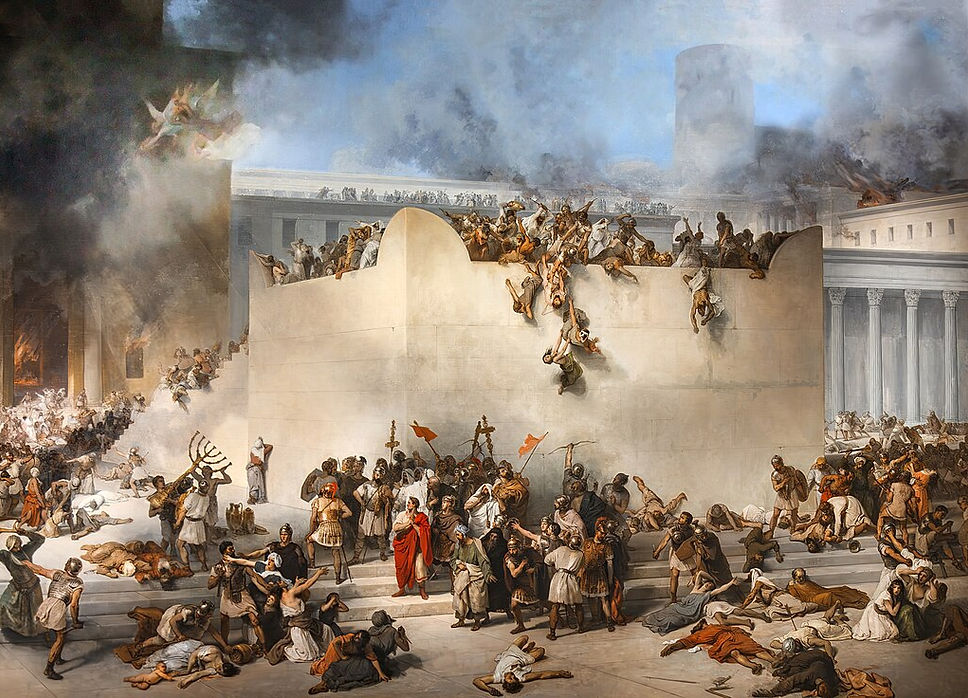
Destruction of Temple of Jerusalem
1867

Crusaders Thirsting near Jerusalem
1836–1850

Meeting of Esau and Jacob
1843

New Favorite in Harem
1866

Ballerina Carlotta Chabert as Venus
1830

Ruth
1835

Odalisque
1867

Susanna at her Bath
1859
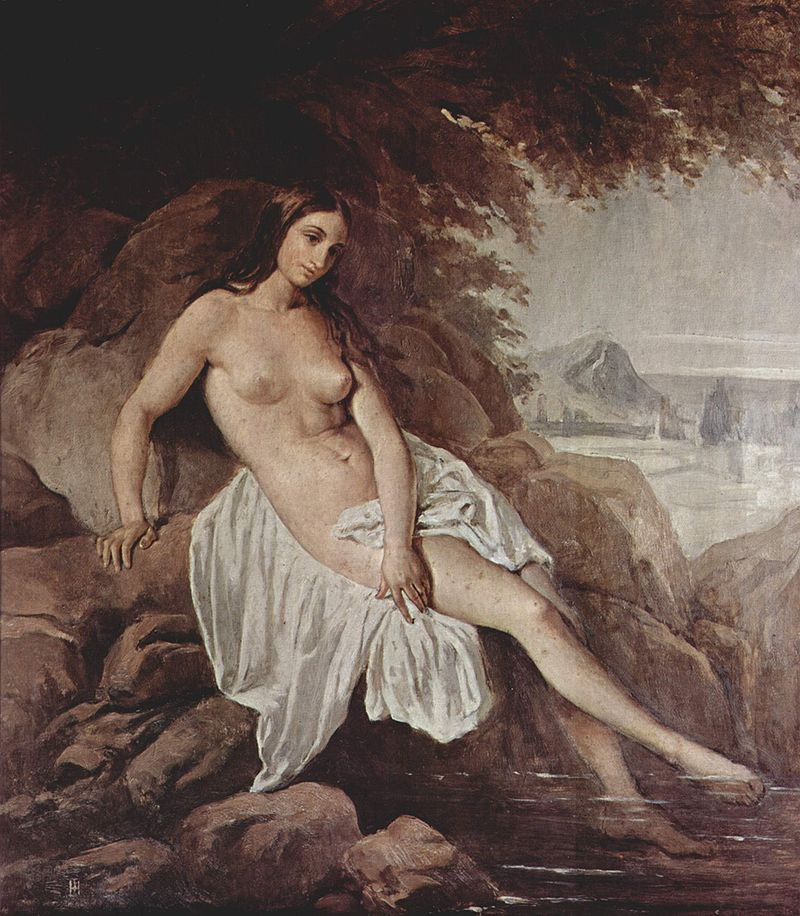
Nude Bather
1832

Odalisque with Book
1866

The Meditation
1851

Samson and the Lion
1842

Secret Accusation
1847–1848

Felicina Caglio Perego di Cremnago
1842

Rinaldo and Armida
1812-13

Female nude
1859

Resting Model

Penitent Mary Magdalene

Tamar of Judah
Eugene Delacroix
1798 - 1863
Ferdinand Victor Eugène Delacroix (26 April 1798 – 13 August 1863) was a French Romantic artist who was regarded as the leader of the French Romantic school.
In contrast to the Neoclassical perfectionism of his chief rival Ingres, Delacroix took for his inspiration the art of Rubens and painters of the Venetian Renaissance, with an attendant emphasis on colour and movement rather than clarity of outline and carefully modelled form. Dramatic and romantic content characterized the central themes of his maturity, and led him not to the classical models of Greek and Roman art, but to travel in North Africa, in search of the exotic. Friend and spiritual heir to Théodore Géricault, Delacroix was also inspired by Lord Byron, with whom he shared a strong identification with the "forces of the sublime", of nature in often violent action.
However, Delacroix was given to neither sentimentality nor bombast, and his Romanticism was that of an individualist. In the words of Baudelaire, "Delacroix was passionately in love with passion, but coldly determined to express passion as clearly as possible." Together with Ingres, Delacroix is considered one of the last old Masters of painting and is one of the few who was ever photographed.
As a painter and muralist, Delacroix's use of expressive brushstrokes and his study of the optical effects of colour profoundly shaped the work of the Impressionists, while his passion for the exotic inspired the artists of the Symbolist movement. A fine lithographer, Delacroix illustrated various works of William Shakespeare, the Scottish author Walter Scott, and the German author Johann Wolfgang von Goethe.

Photography of Eugène Delacroix by Félix Nadar
c. 1857

The Barque of Dante
1822

Mlle Rose
1817-20

Aspasia
c. 1824

Girl Seated in a Cemetery
1824

The Massacre at Chios
1824

A Mortally Wounded Brigand Quenches his Thirst
c. 1825
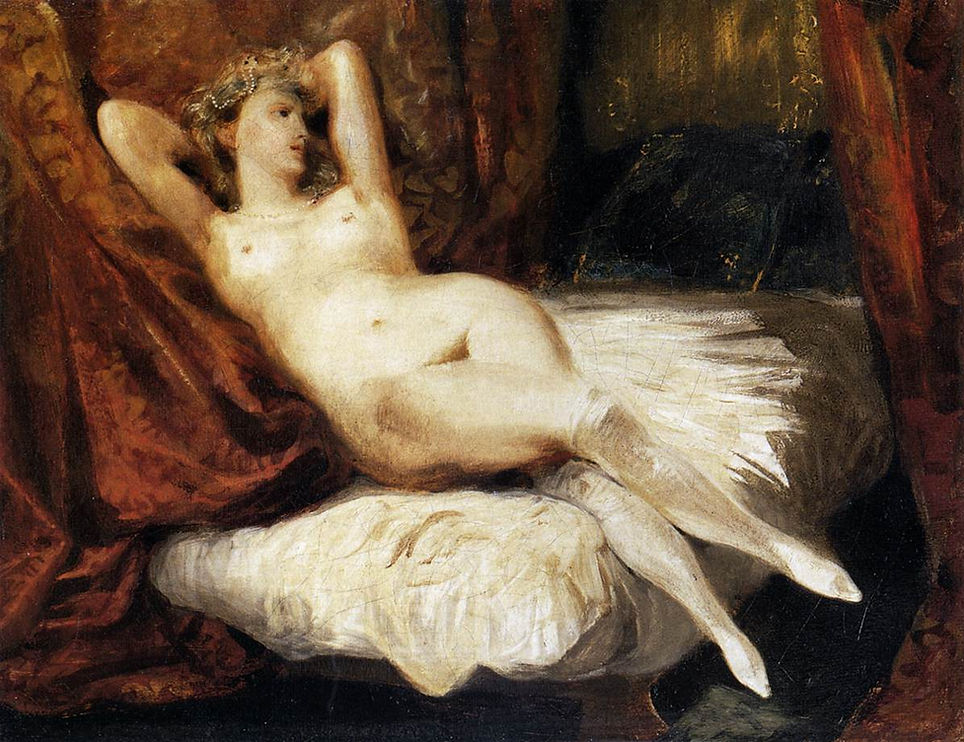
Female Nude Reclining on a Divan
1825-26

Louis d'Orléans Showing his Mistress
1825-26

Greece on the Ruins of Missolonghi
1826

Woman with a Parrot
1827

Odalisque Reclining on a Divan
1827-28

The Death of Sardanapalus
1827

The Death of Sardanapalus (detail)
1827

Liberty Leading the People (28th July 1830)
1830

Liberty Leading the People (detail)
1830
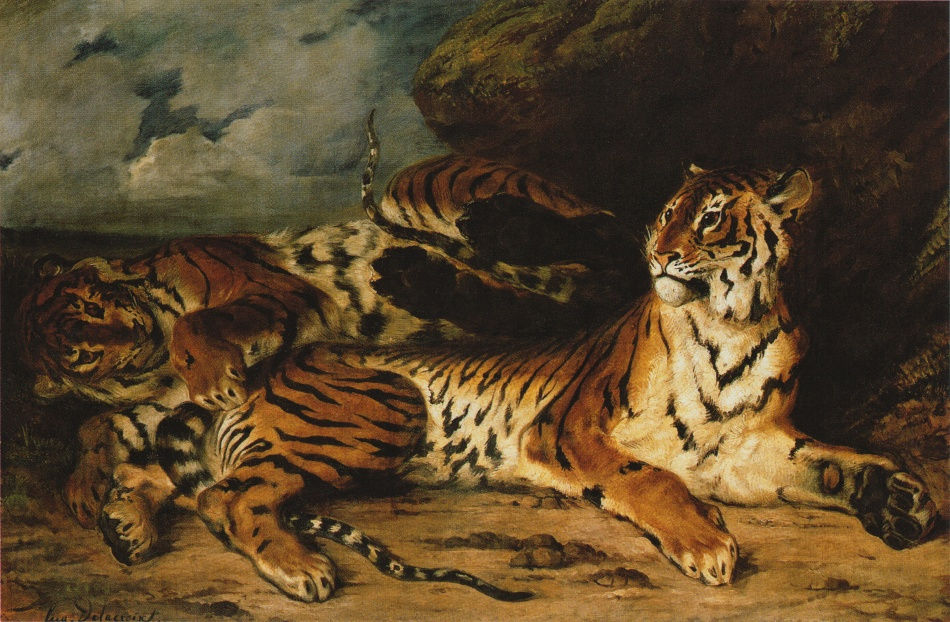
A Young Tiger Playing with its Mother
1830

The Natchez
1823-35

The Women of Algiers
1834

Frédéric Chopin
1838

George Sand
1838

Cleopatra and the Peasant
1838

The Death of Ophelia
1838
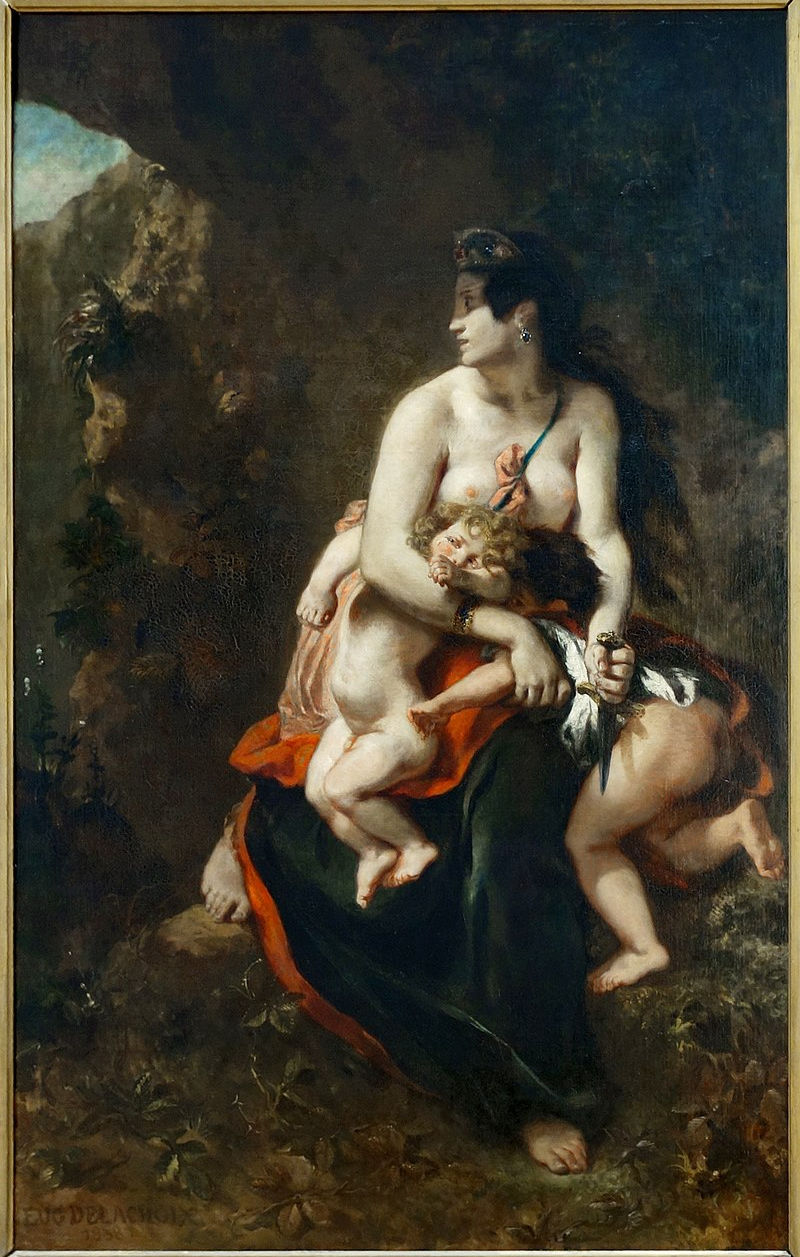
Medea about to Kill her Children
1838 (1862)

Hamlet and Horatio in the Graveyard
1839

Tasso in the Madhouse
1839

Jewish Wedding in Morocco
c. 1839

The Abduction of Rebecca
1846

A Moroccan Saddling a Horse
1855

Michelangelo in his Studio
1849-50

Pietà
c. 1850

Jacob Wrestling with the Angel (detail)
1854-61

The Bride of Abydos
1857

Odalisque
1857

Arab Horses Fighting in a Stable
1860

Lion Hunt
1861

Collision of Moorish Horsemen
1844
Illustrations for Goethe’s Faust

Illustrations for Goethe’s Faust
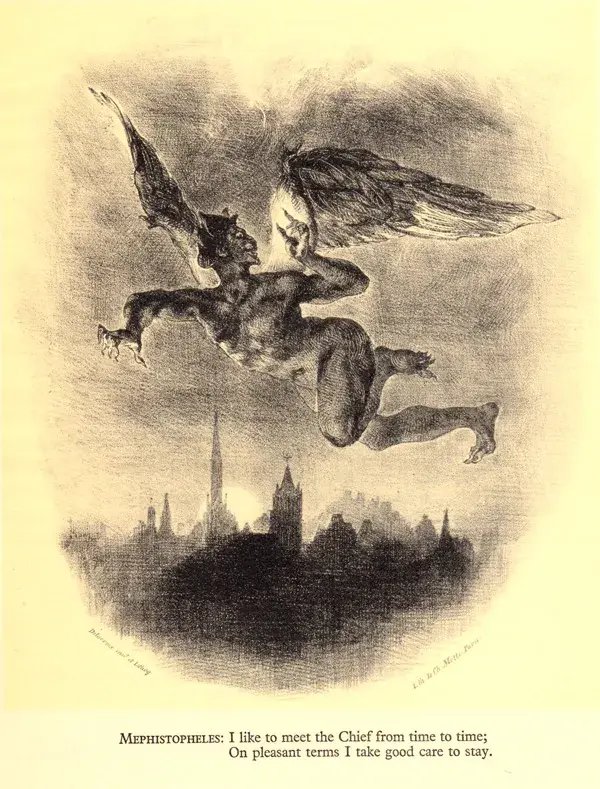
Illustrations for Goethe’s Faust
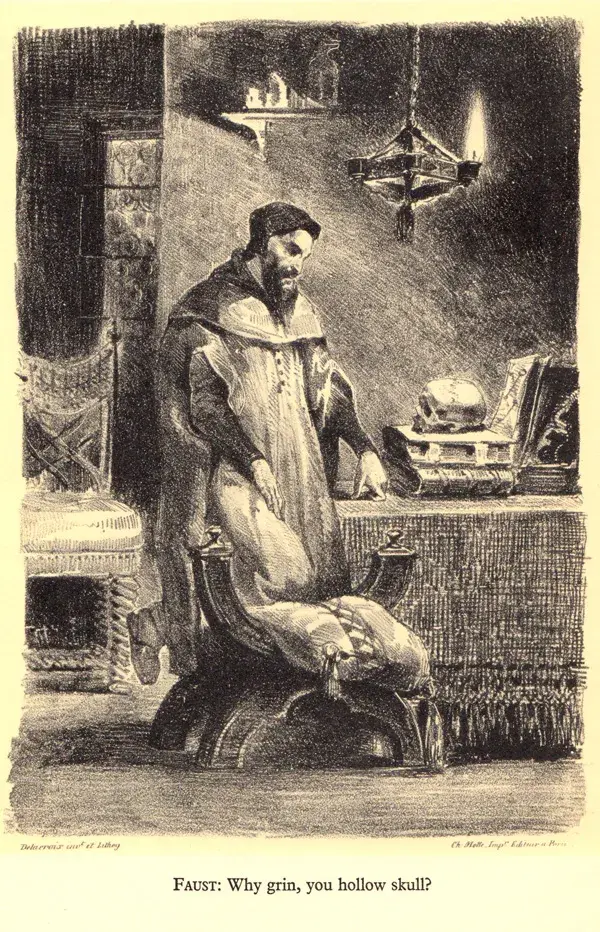
Illustrations for Goethe’s Faust

Illustrations for Goethe’s Faust
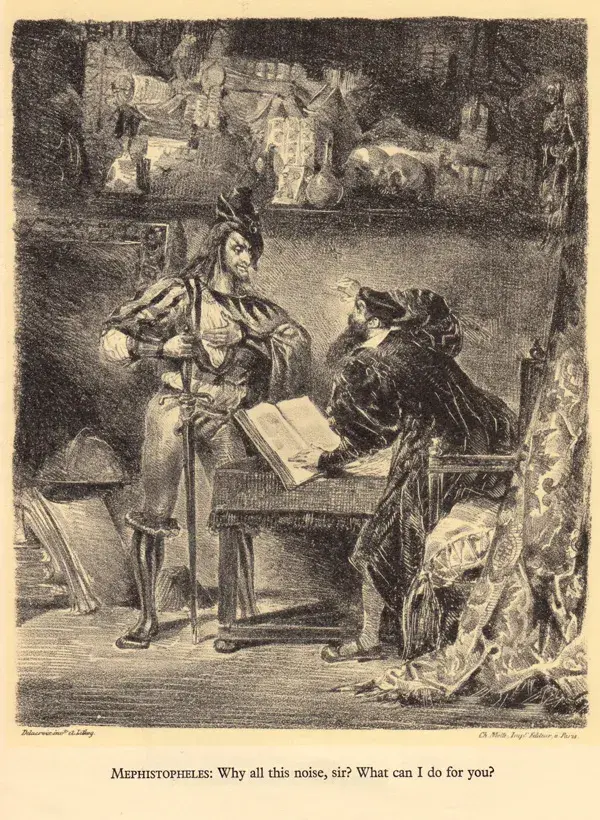
Illustrations for Goethe’s Faust

Illustrations for Goethe’s Faust
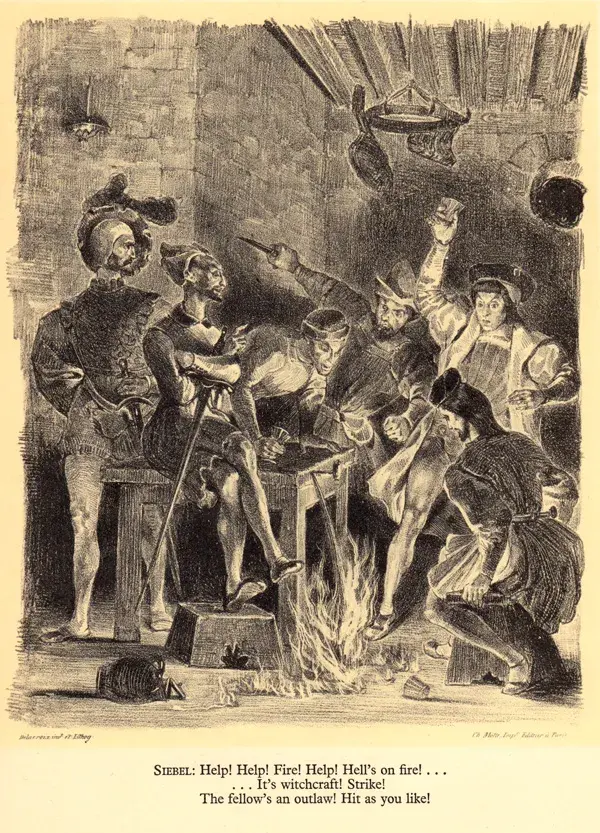
Illustrations for Goethe’s Faust

Illustrations for Goethe’s Faust
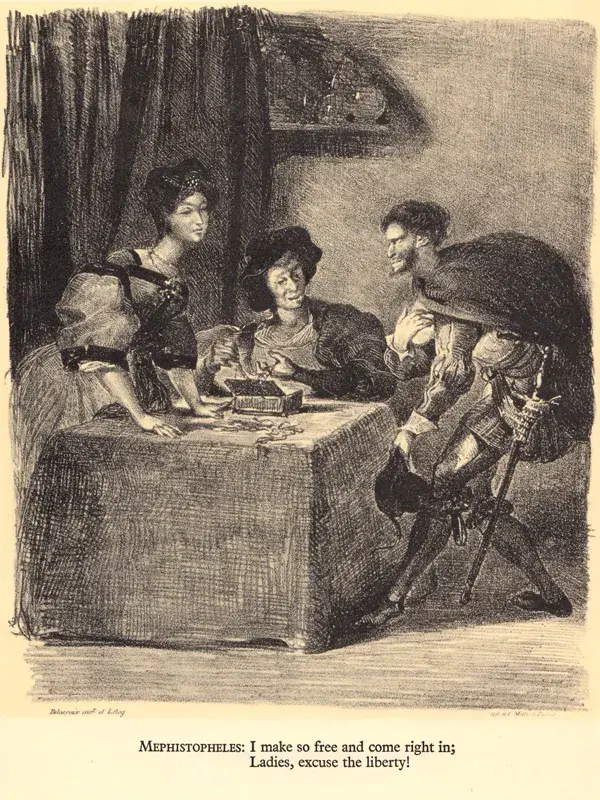
Illustrations for Goethe’s Faust
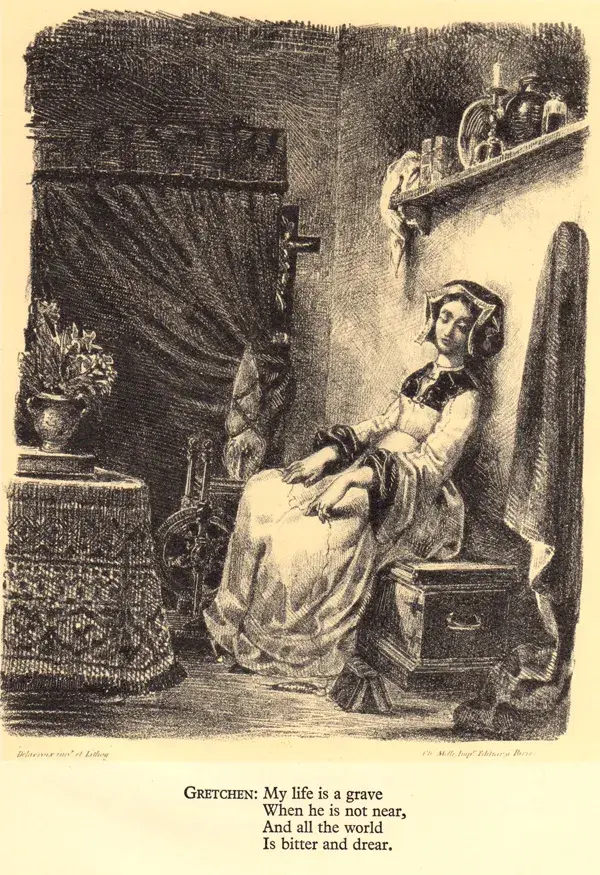
Illustrations for Goethe’s Faust

Illustrations for Goethe’s Faust
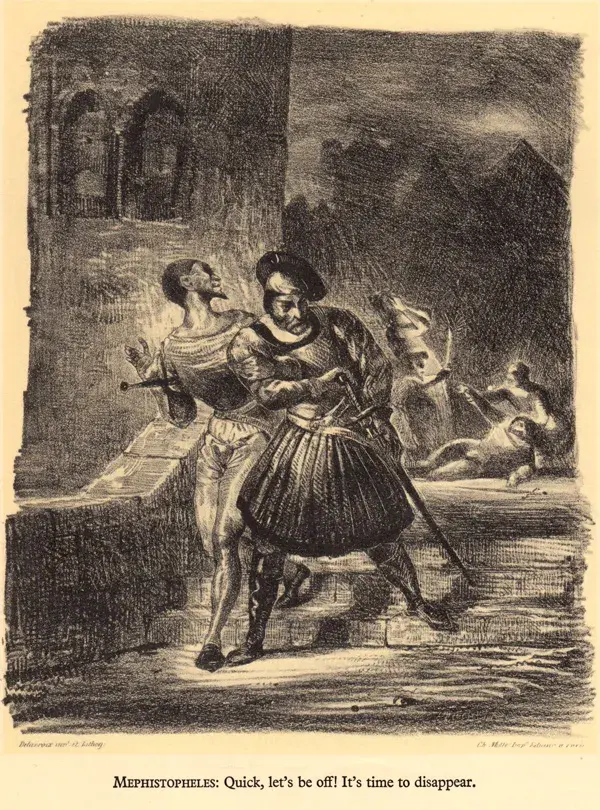
Illustrations for Goethe’s Faust
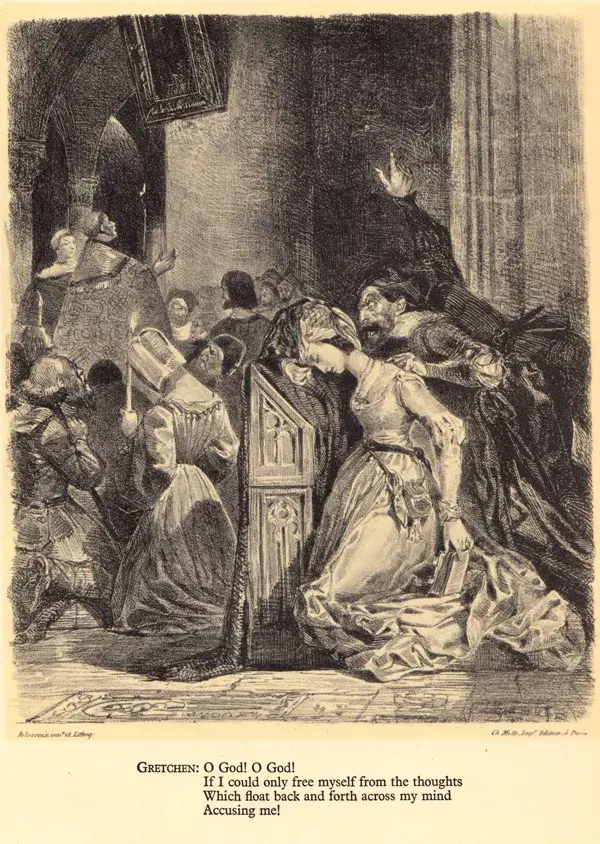
Illustrations for Goethe’s Faust

Illustrations for Goethe’s Faust
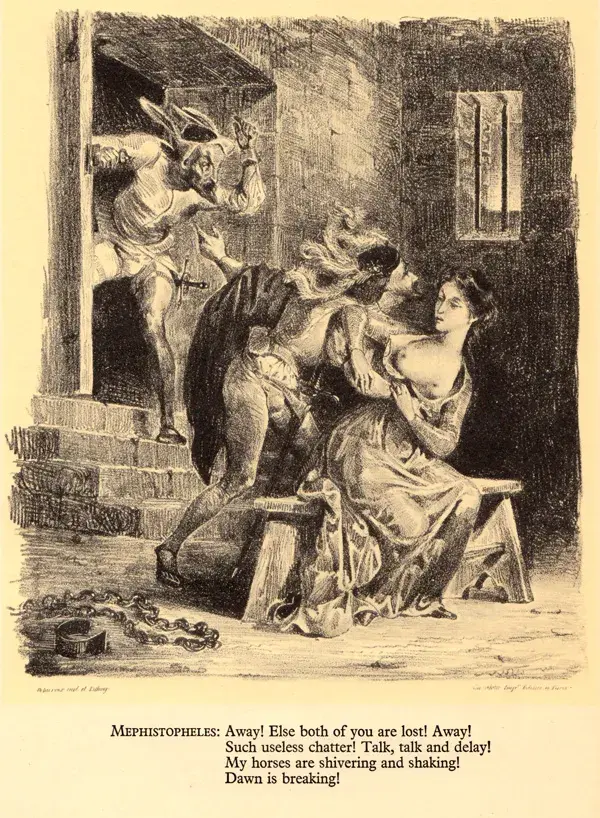
Illustrations for Goethe’s Faust

Illustrations for Goethe’s Faust
